Abstract
The rat corticospinal tract was stimulated at the medullary pyramid and at different levels in the spinal cord (segments C2/3, T2, T12) and responses were recorded from the surface of the cerebral cortex and extracellularly from individual cortical neurones. Irrespective of the site stimulated, the earliest surface and single unit responses had frequency-following and other characteristics which indicated they resulted from antidromic invasion of corticospinal neurones. Synaptically mediated discharges with longer latency were also evoked in cortical neurones other than corticospinal neurones. At least in part these discharges probably resulted from stimulus spread to the dorsal column-medial lemniscus pathway. Corticospinal neurones were almost all between 1.0 and 1.5 mm beneath the cortical surface while synaptically excited units were at all depths greater than 0.4 mm. By stimulating at two sites, estimates of conduction velocity were obtained for single corticospinal axons. For those reaching at least as far as T12, velocities caudal to the pyramid ranged from 5 to 19 m/s (mean 11.4 +/- 2.9 m/s; S.D.). Slow axons in the pyramid (antidromic latency greater than 2.5 ms) could rarely be excited from T12. By stimulating at three sites (pyramid, T2, T12) most axons reaching T12 were found to have similar conduction velocities in the 'cervical' (pyramid-T2) and 'thoracic' (T2-T12) cord. However, in 15% of the axons the 'thoracic' velocity was at least 25% less than the cervical. The results are discussed and related to those from previous investigations.
Full text
PDF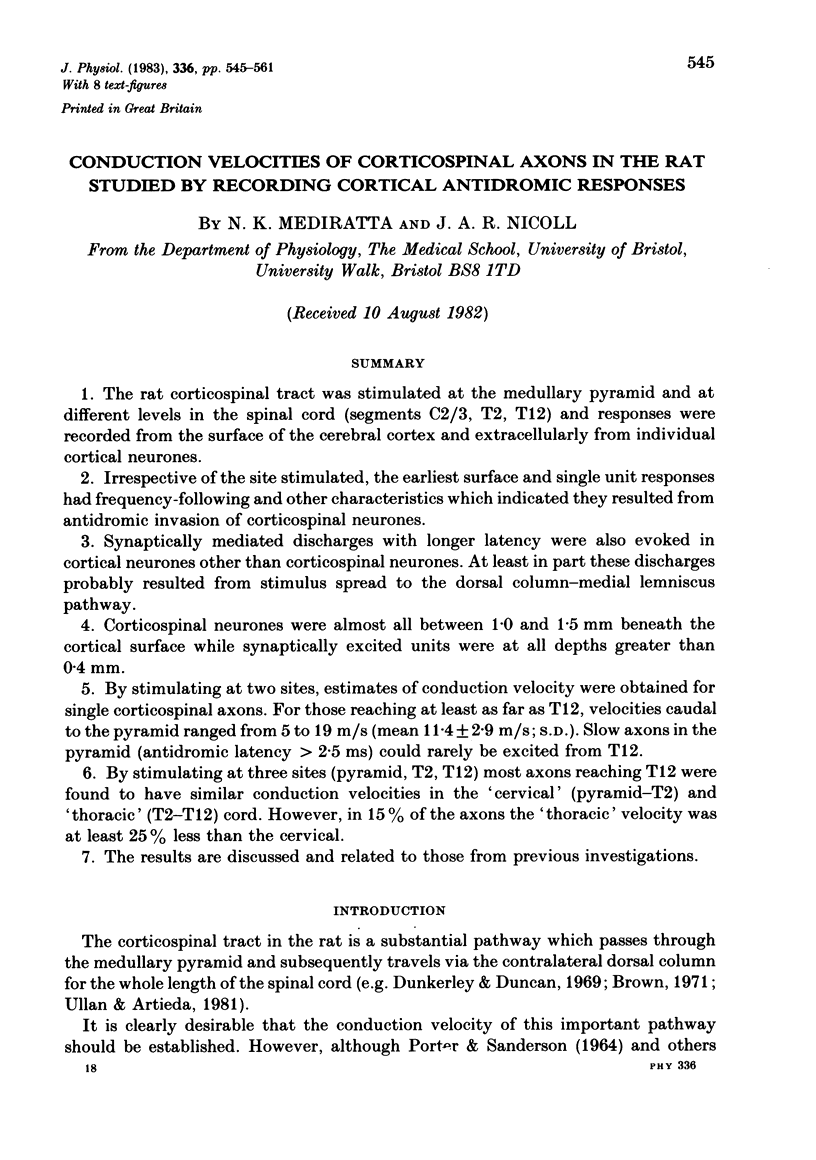
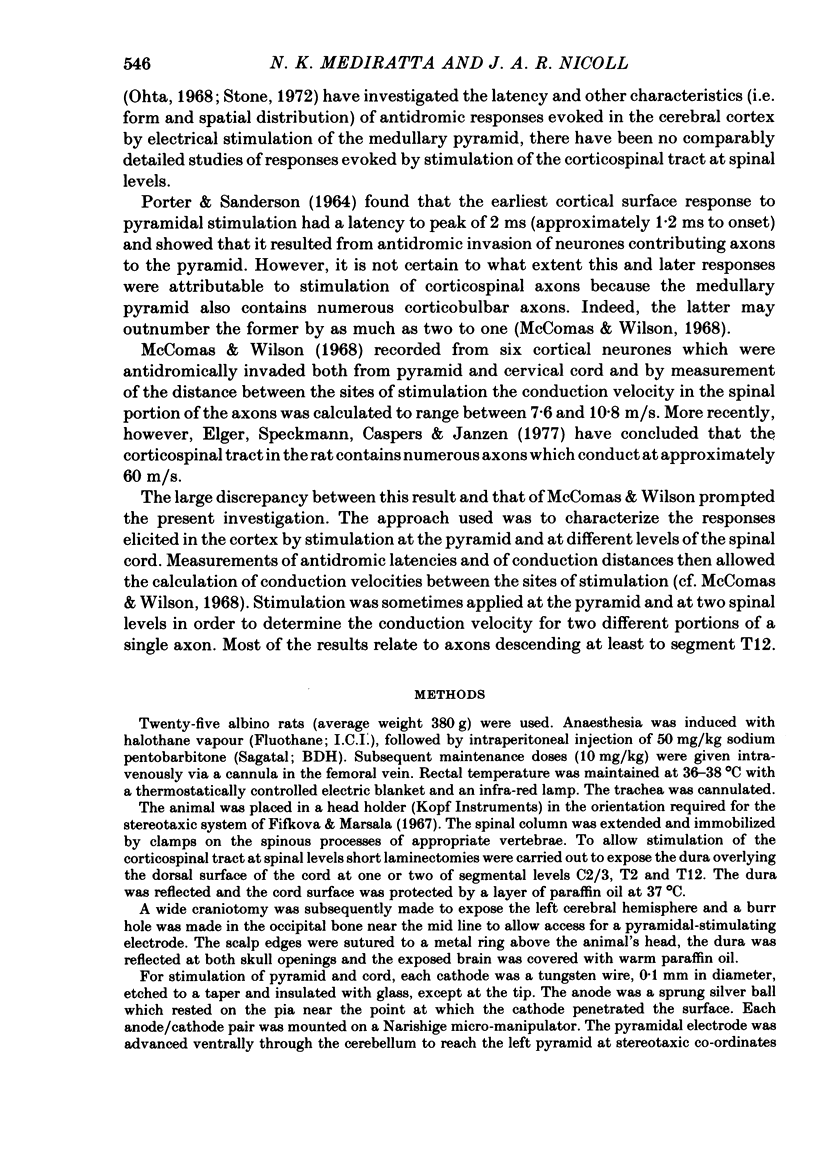
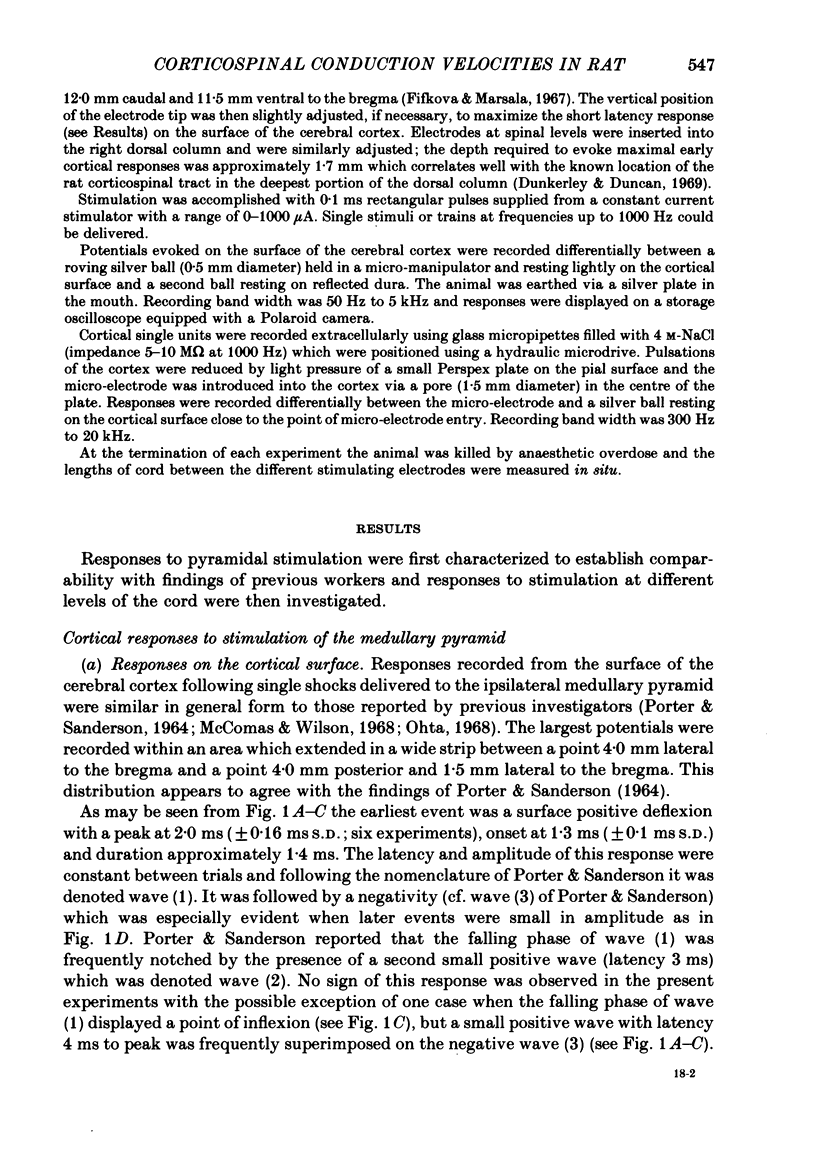
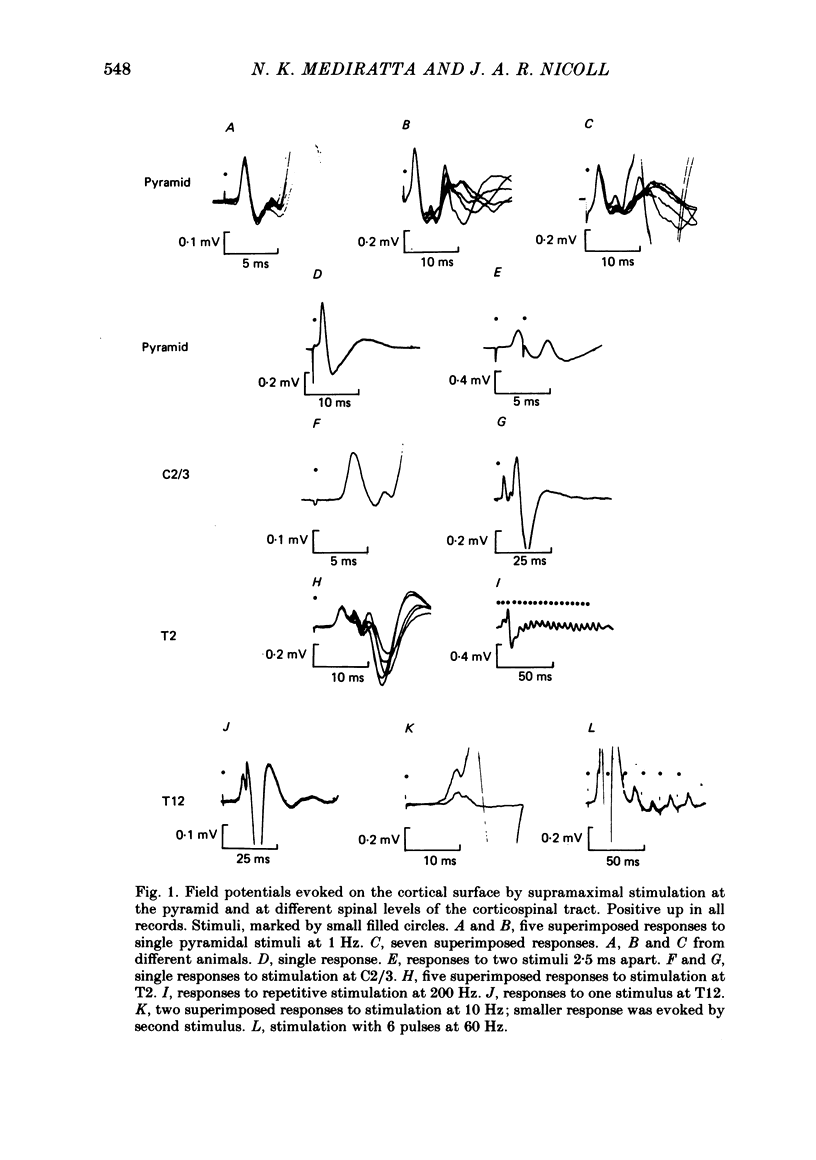

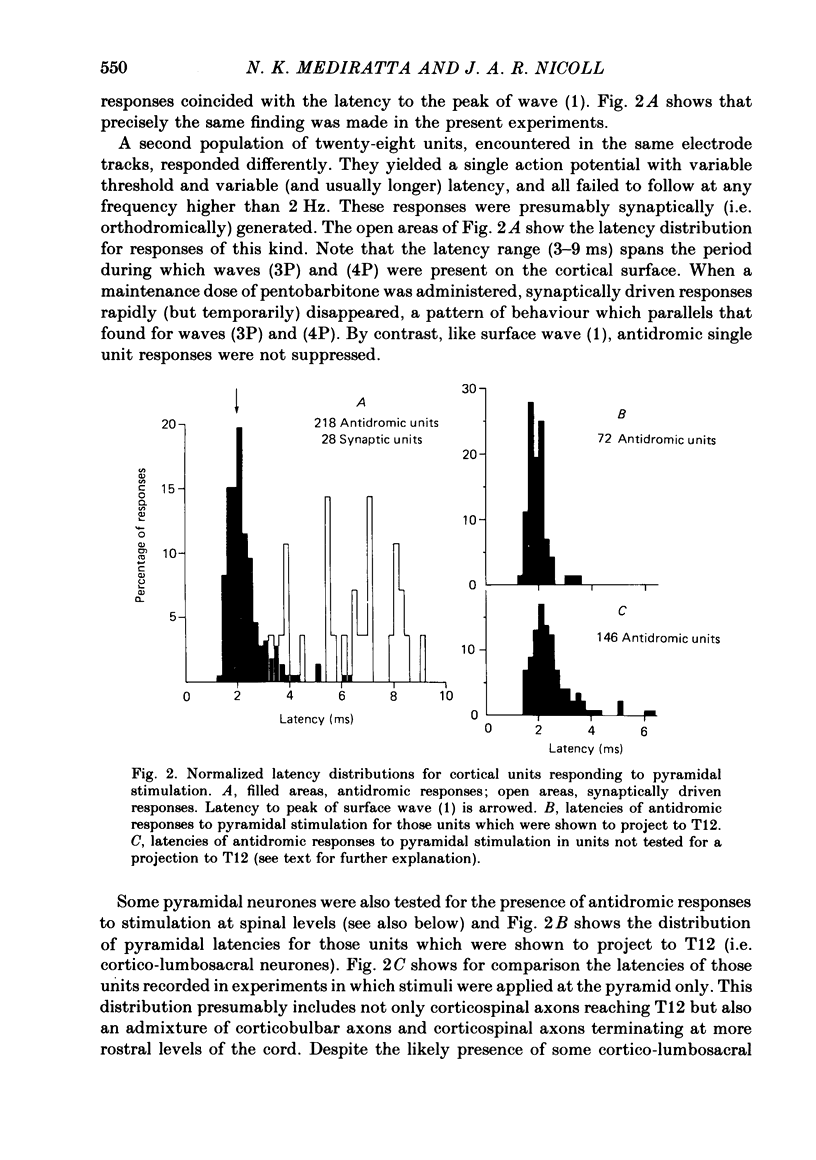
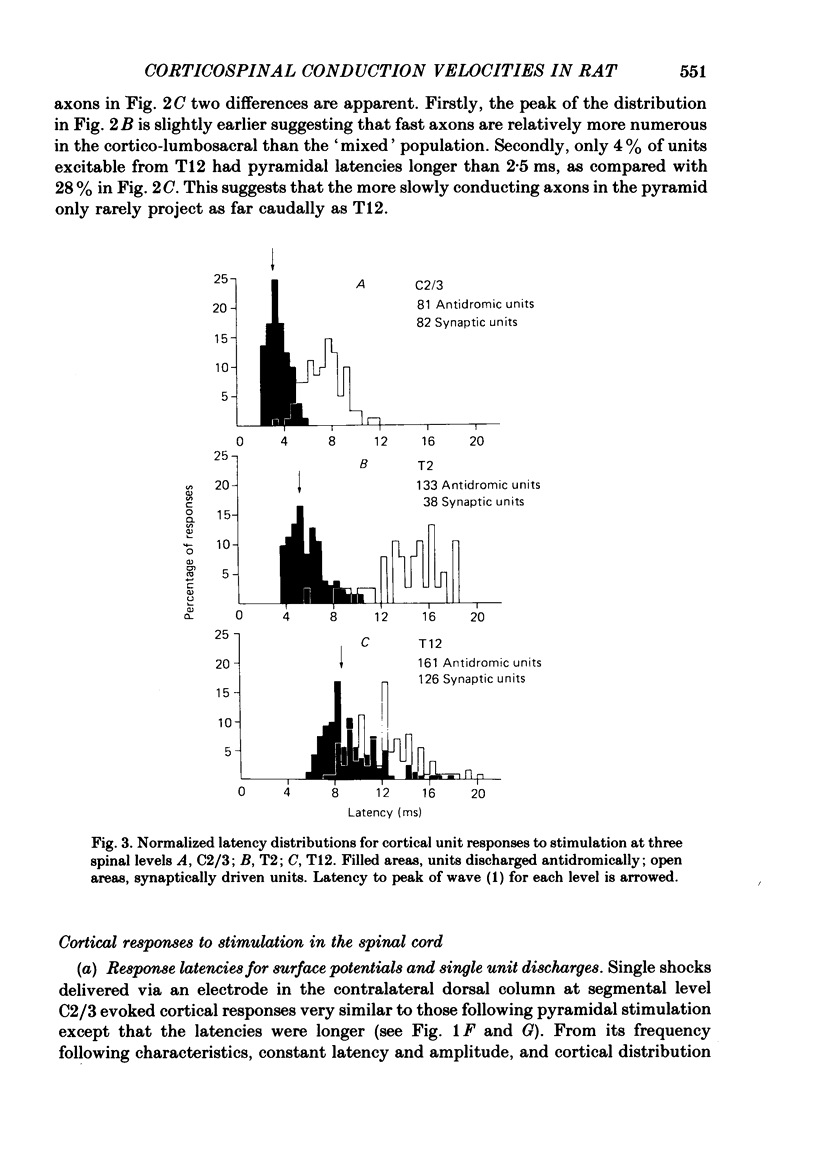
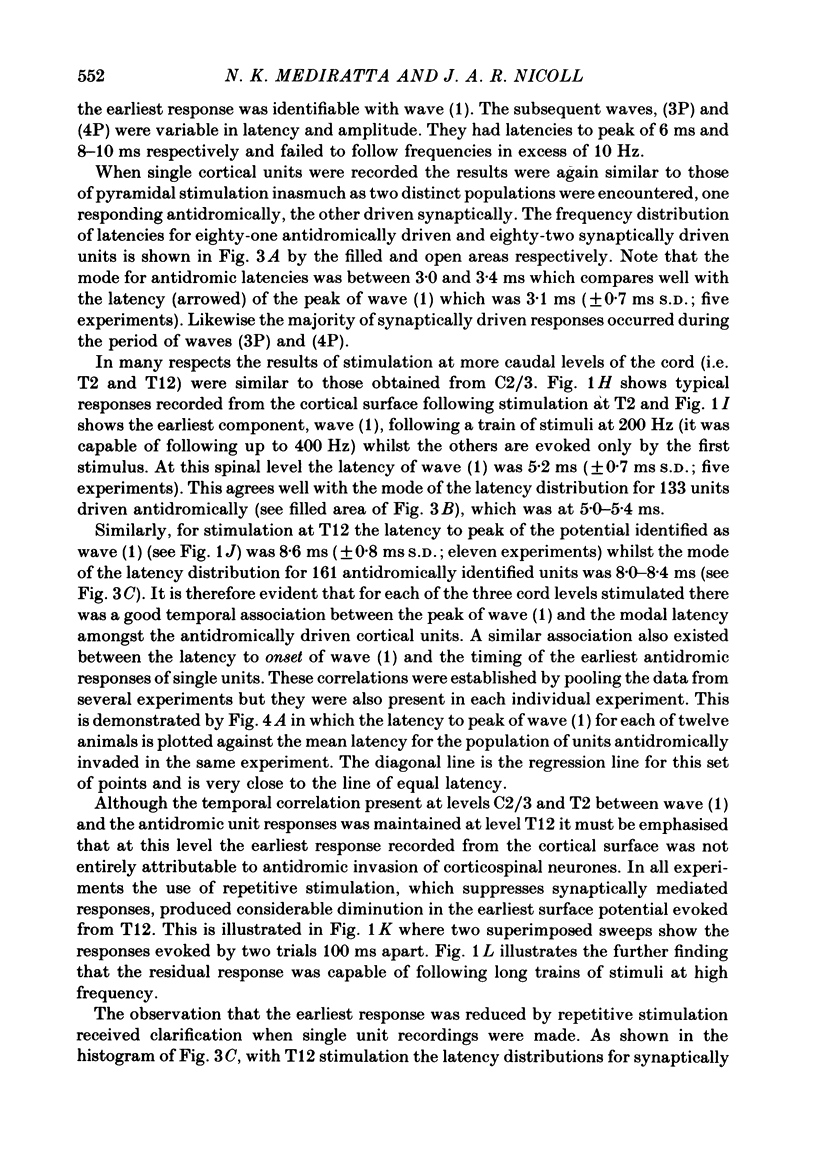
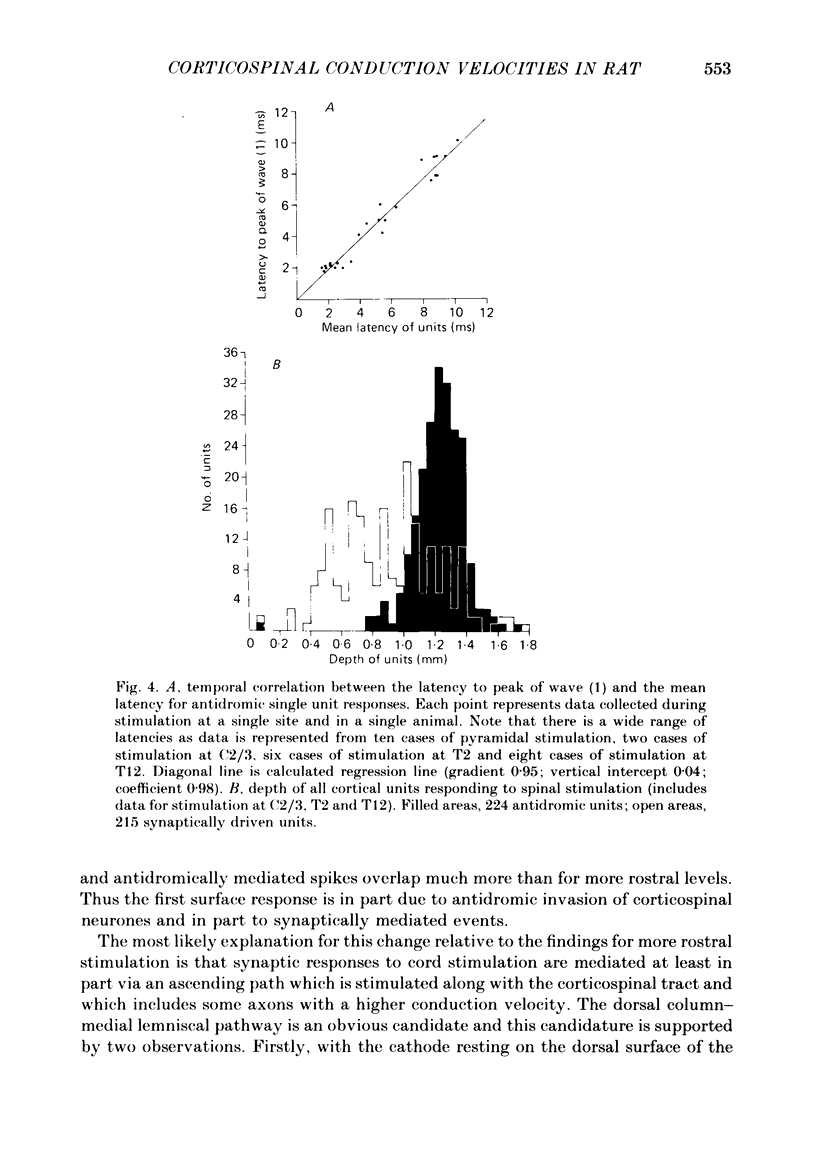
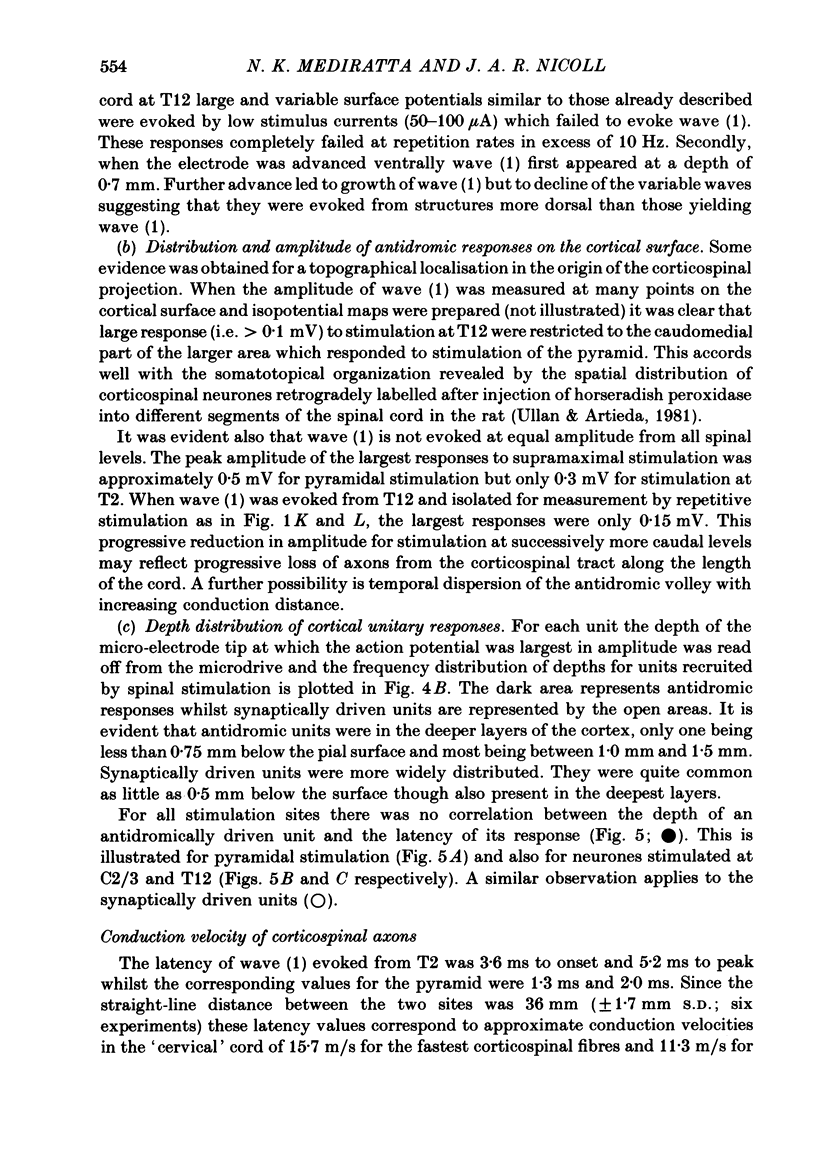

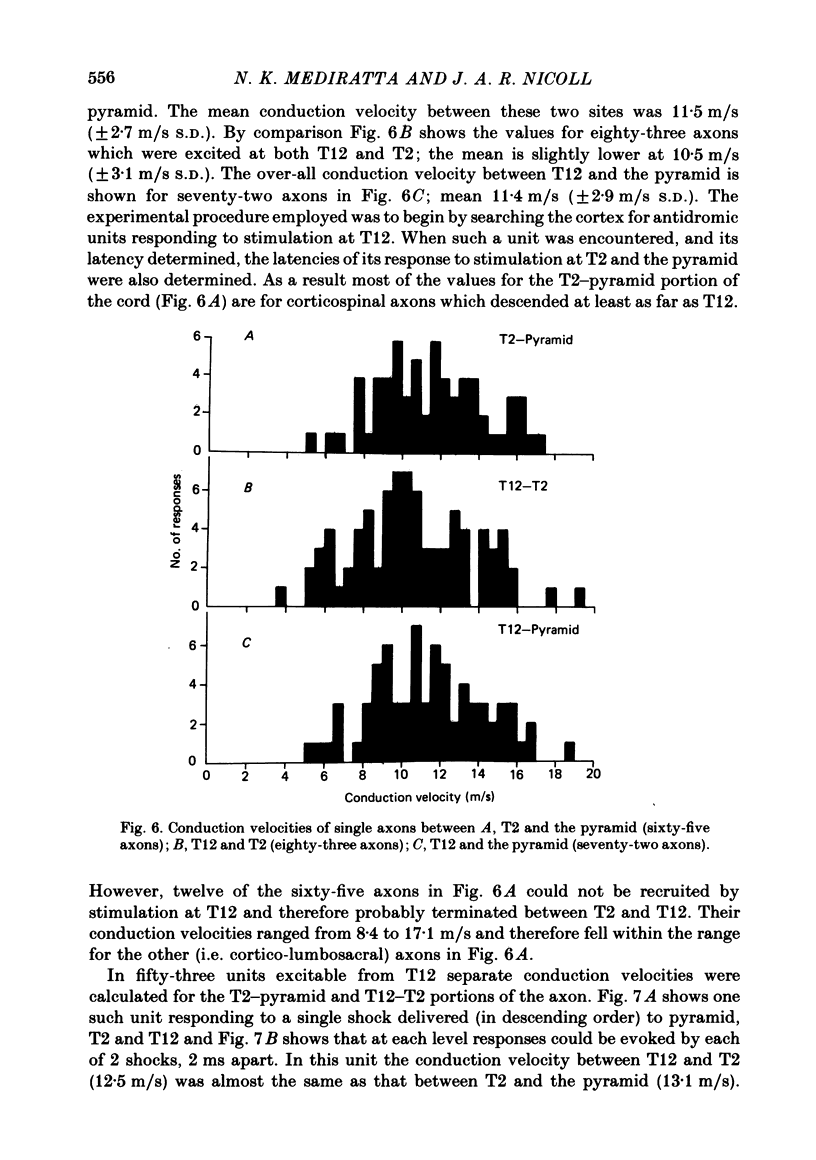

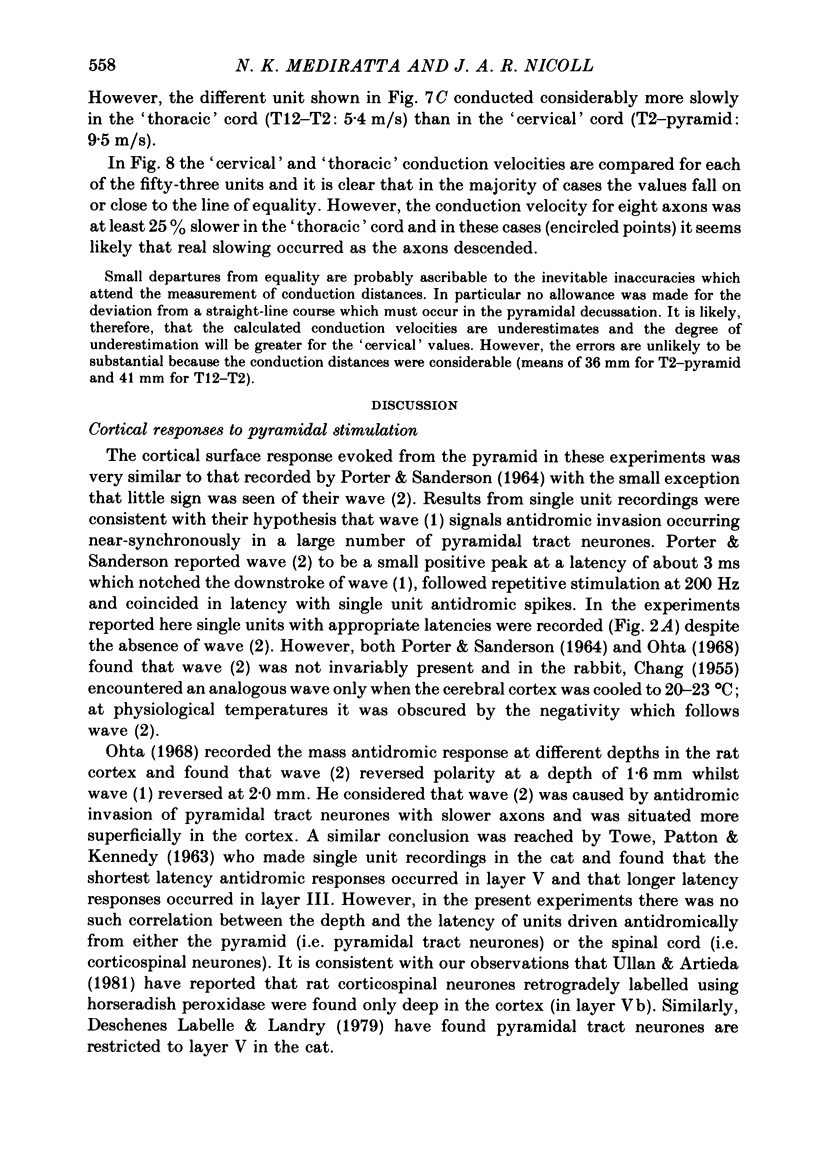
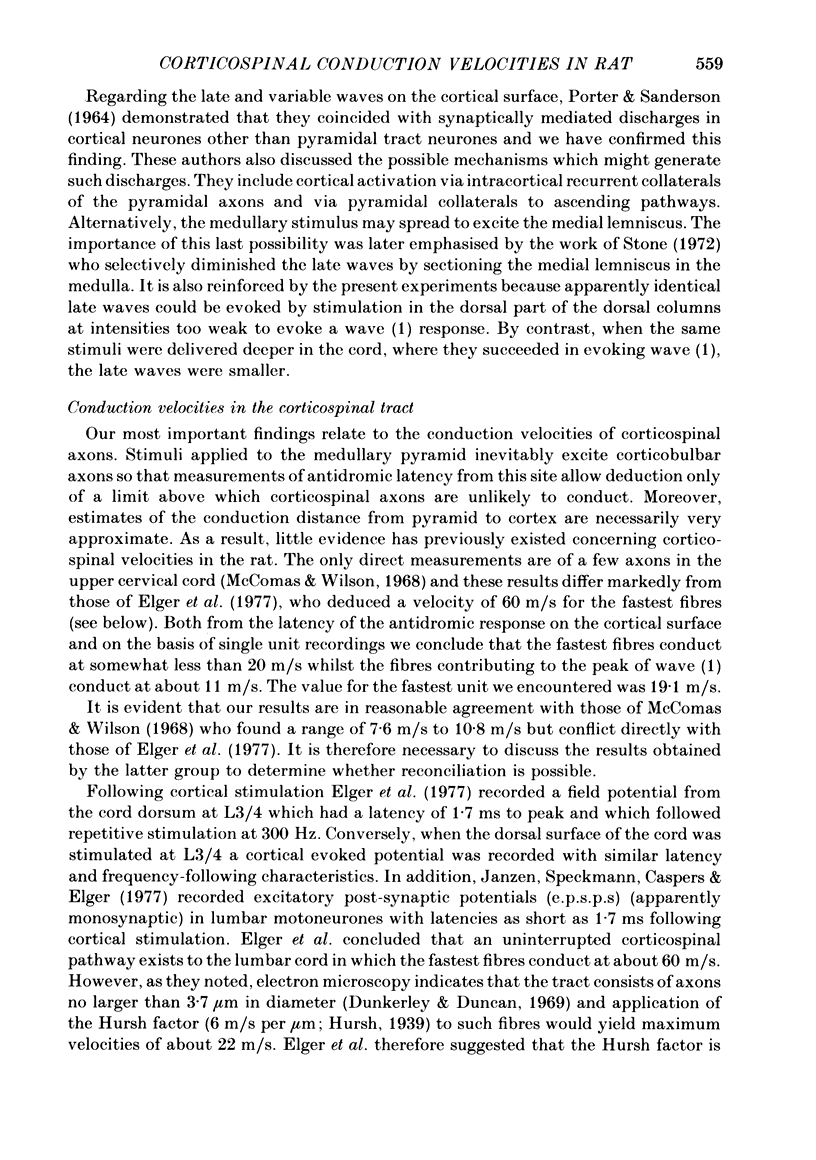
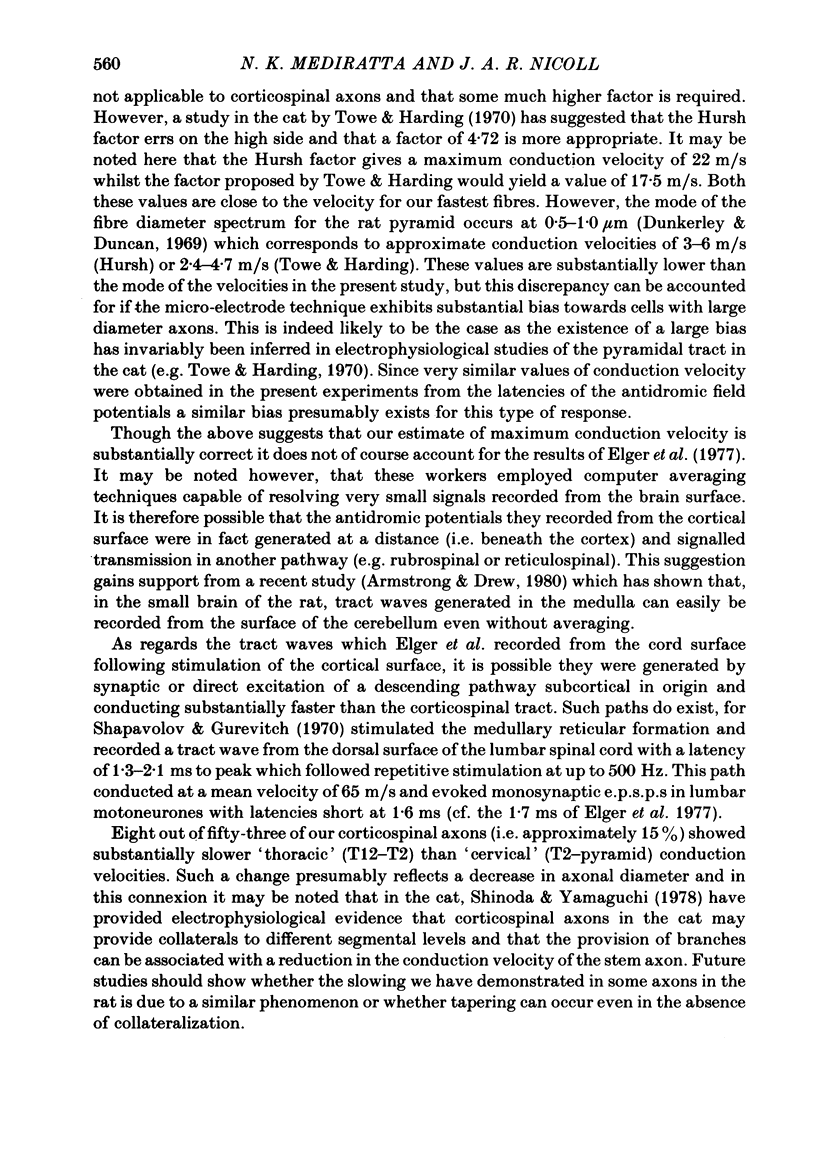
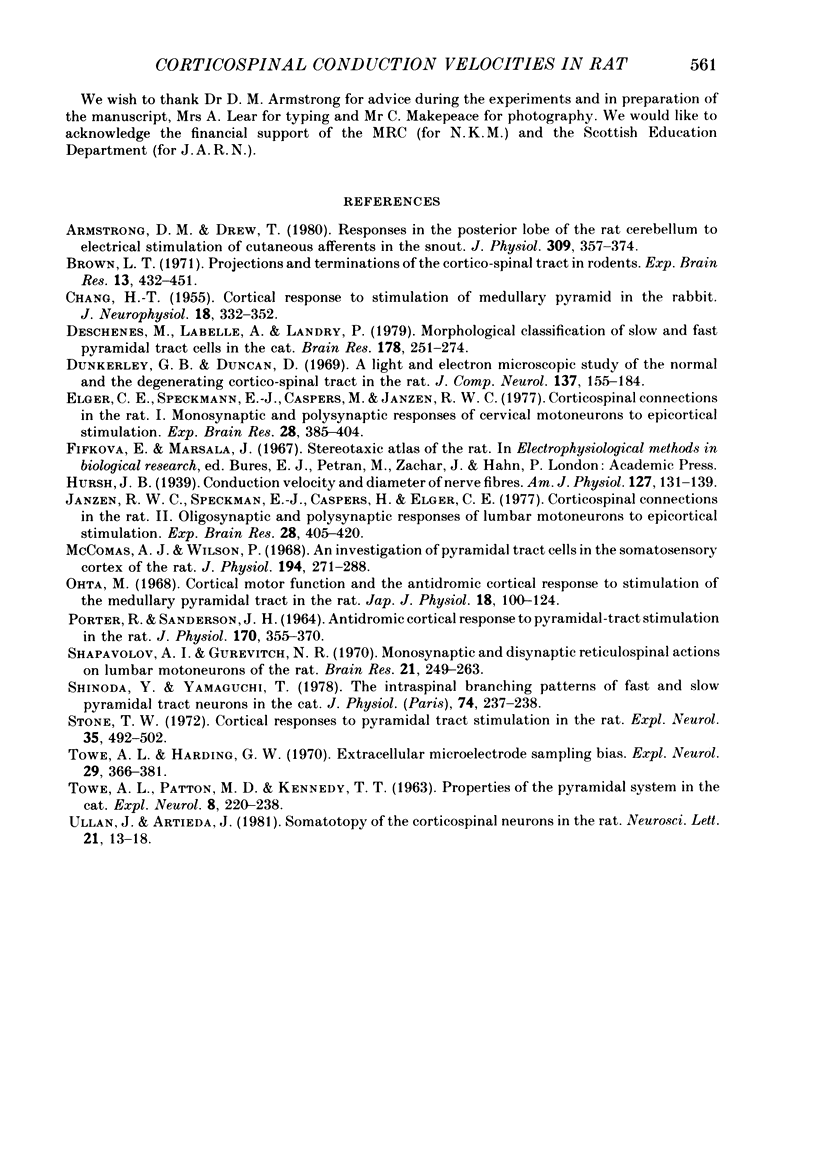
Selected References
These references are in PubMed. This may not be the complete list of references from this article.
- Armstrong D. M., Drew T. Responses in the posterior lobe of the rat cerebellum to electrical stimulation of cutaneous afferents to the snout. J Physiol. 1980 Dec;309:357–374. doi: 10.1113/jphysiol.1980.sp013513. [DOI] [PMC free article] [PubMed] [Google Scholar]
- Brown L. T., Jr Projections and termination of the corticospinal tract in rodents. Exp Brain Res. 1971 Oct 25;13(4):432–450. doi: 10.1007/BF00234340. [DOI] [PubMed] [Google Scholar]
- CHANG H. T. Cortical response to stimulation of medullary pyramid in rabbit. J Neurophysiol. 1955 Jul;18(4):332–352. doi: 10.1152/jn.1955.18.4.332. [DOI] [PubMed] [Google Scholar]
- Deschênes M., Labelle A., Landry P. Morphological characterization of slow and fast pyramidal tract cells in the cat. Brain Res. 1979 Dec 14;178(2-3):251–274. doi: 10.1016/0006-8993(79)90693-0. [DOI] [PubMed] [Google Scholar]
- Dunkerley G. B., Duncan D. A light and electron microscopic study of the normal and the degenerating corticospinal tract in the rat. J Comp Neurol. 1969 Oct;137(2):155–183. doi: 10.1002/cne.901370204. [DOI] [PubMed] [Google Scholar]
- Elger C. E., Speckmann E. J., Caspers H., Janzen R. W. Cortico-spinal connections in the rat. I. Monosynaptic and polysynaptic responses of cervical motoneurons to epicortical stimulation. Exp Brain Res. 1977 Jun 27;28(3-4):385–404. doi: 10.1007/BF00235718. [DOI] [PubMed] [Google Scholar]
- Janzen R. W., Speckmann E. J., Caspers H., Elger C. E. Cortico-spinal connections in the rat. II. Oligosynaptic and polysynaptic responses of lumbar motoneurons to epicortical stimulation. Exp Brain Res. 1977 Jun 27;28(3-4):405–420. doi: 10.1007/BF00235719. [DOI] [PubMed] [Google Scholar]
- McComas A. J., Wilson P. An investigation of pyramidal tract cells in the somatosensory cortex of the rat. J Physiol. 1968 Jan;194(1):271–288. doi: 10.1113/jphysiol.1968.sp008407. [DOI] [PMC free article] [PubMed] [Google Scholar]
- Ota M. Cortical motor function and the antidromic cortical response to stimulation of the medullary pyramidal tract in the rat. Jpn J Physiol. 1968 Feb 15;18(1):100–124. [PubMed] [Google Scholar]
- PORTER R., SANDERSON J. H. ANTIDROMIC CORTICAL RESPONSE TO PYRAMIDAL-TRACT STIMULATION IN THE RAT. J Physiol. 1964 Mar;170:355–370. doi: 10.1113/jphysiol.1964.sp007336. [DOI] [PMC free article] [PubMed] [Google Scholar]
- Shapovalov A. I., Gurevitch N. R. Monosynaptic and disynaptic reticulospinal actions on lumbar motoneurons of the rat. Brain Res. 1970 Jul 14;21(2):249–263. doi: 10.1016/0006-8993(70)90366-5. [DOI] [PubMed] [Google Scholar]
- Shinoda Y., Yamaguchi T. The intraspinal branching patterns of fast and slow pyramidal tract neurons in the cat. J Physiol (Paris) 1978;74(3):237–238. [PubMed] [Google Scholar]
- Stone T. W. Cortical responses to pyramidal tract stimulation in the rat. Exp Neurol. 1972 Jun;35(3):492–502. doi: 10.1016/0014-4886(72)90119-7. [DOI] [PubMed] [Google Scholar]
- Towe A. L., Harding G. W. Extracellular microelectrode sampling bias. Exp Neurol. 1970 Nov;29(2):366–381. doi: 10.1016/0014-4886(70)90065-8. [DOI] [PubMed] [Google Scholar]
- Ullan J., Artieda J. Somatotopy of the corticospinal neurons in the rat. Neurosci Lett. 1981 Jan 1;21(1):13–18. doi: 10.1016/0304-3940(81)90049-5. [DOI] [PubMed] [Google Scholar]


